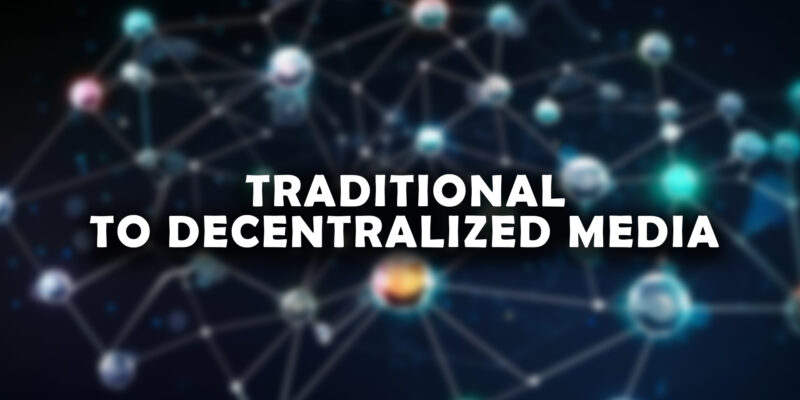Decentralization is a concept with widespread use, but it lacks a precise definition that captures its spirit generally. Decentralization, at its heart, is the transfer of authority, control, and power from one central body or authority to numerous, frequently dispersed geographically, organizations. It undermines the traditional hierarchical structure and encourages the decentralization of power and decision-making to regional or local entities.
The Evolution of Media From Traditional to Decentralized
The creation, distribution, and monetization of material are under the strict control of a small but influential group of powerful organizations, most often powerful governments or corporations, in a traditional, centralized media environment. The large-scale, consistent broadcast of information made possible by this model has drawn criticism for its propensity to encourage monopolization, censorship, and biased reporting. It has produced a media environment where the many are influenced by the few, which frequently raises questions about information bias, freedom of speech, and the accessibility of other viewpoints.
Contrastingly, in a decentralized media structure, no single entity holds the exclusive power to create or distribute content. Instead, numerous individual content creators, platforms, and consumers collectively contribute to the media landscape. It facilitates an environment in which every participant has the potential to be both a consumer and a creator, promoting diversity, inclusivity, and democratization. This framework introduces a horizontal power structure, in stark contrast to the vertical hierarchy observed in traditional media.
Case Studies: Successful Implementations of Decentralization in Media
Steemit: Based on the Steem blockchain, Steemit is a decentralized social media network. It makes use of a cryptocurrency token system to pay users for creating and curating content. The platform’s original consensus mechanism promotes community interaction and guarantees the quality of the material. Steemit serves as an example of how decentralized media may encourage content production and support a thriving contributor ecosystem.
A decentralized content-sharing system called LBRY (Library) enables authors to broadcast their media material directly to the public without the use of middlemen. Direct content sharing and monetization are made possible through the use of peer-to-peer networking and blockchain technology. By giving creators complete control over their work and just recompense for their contributions, LBRY serves as an example of how decentralized media may enlist the help of creators.
Filecoin: A distributed marketplace for file storage, Filecoin is a decentralized storage network that makes use of IPFS (Interplanetary File System) and blockchain. Users can buy storage services from others or rent out any extra storage space they may have. Filecoin serves as an example of how decentralized media might address the problem of centralized data storage and guarantee data accessibility and redundancy.
Conclusion
Decentralized media has a bright future full of opportunities. A few examples of the enormous potential that lies ahead are interoperability, tokenization, augmented reality, and collaborative governance. The future of this media revolution will be shaped by mainstream adoption, user experience, and responsible governance.


Comments